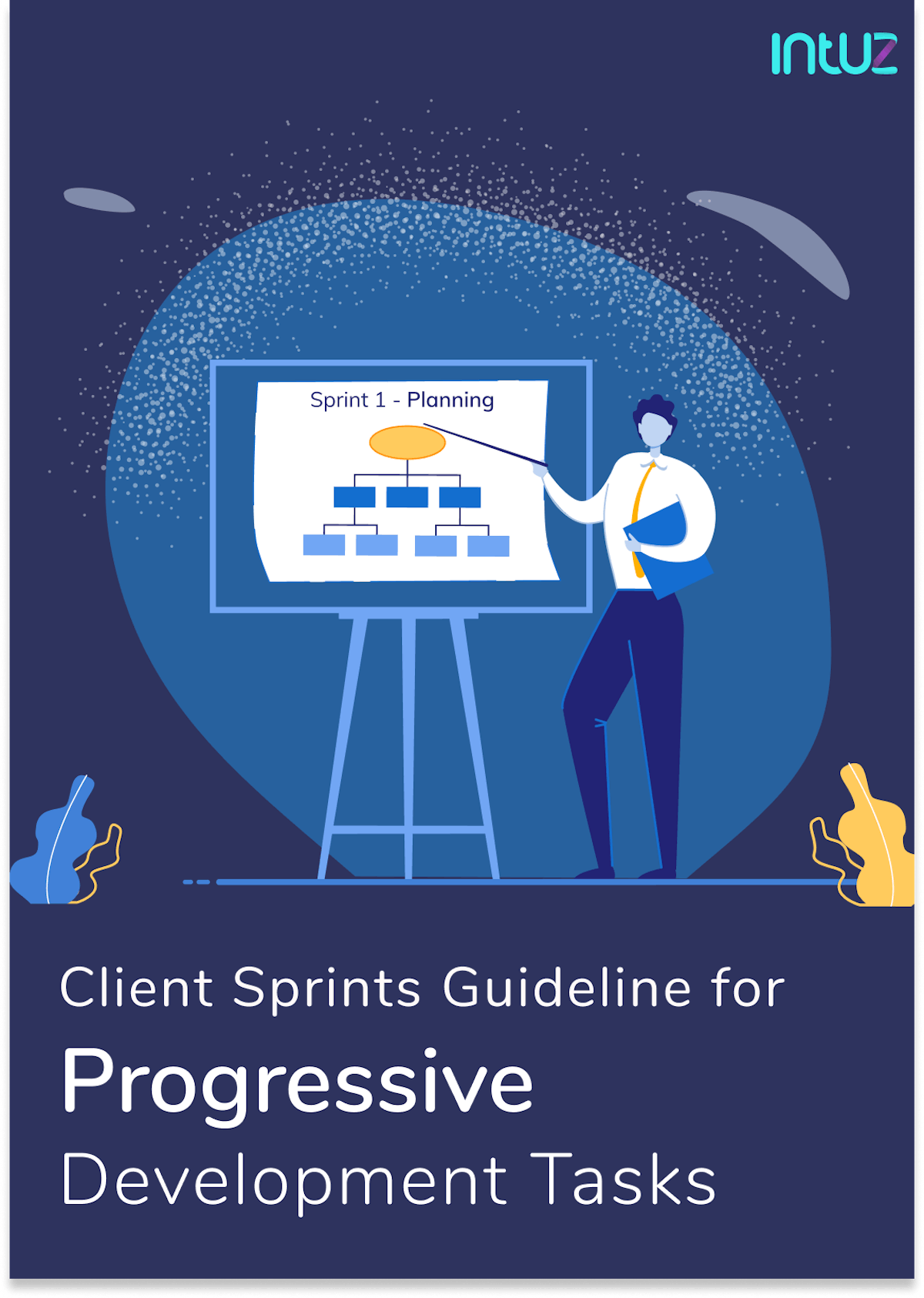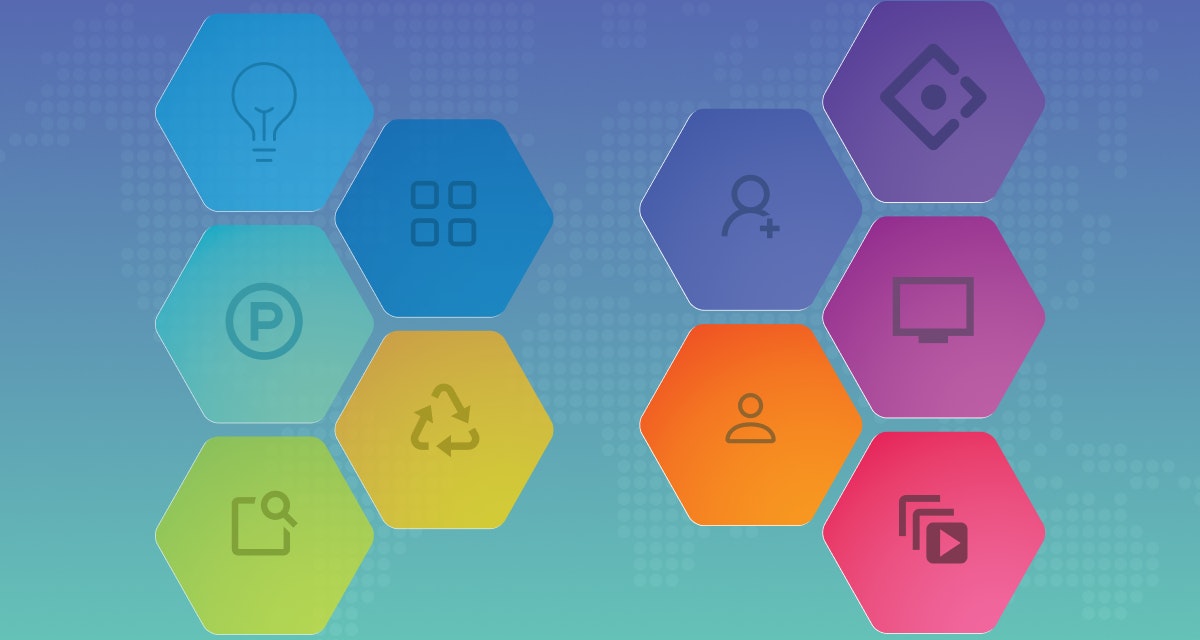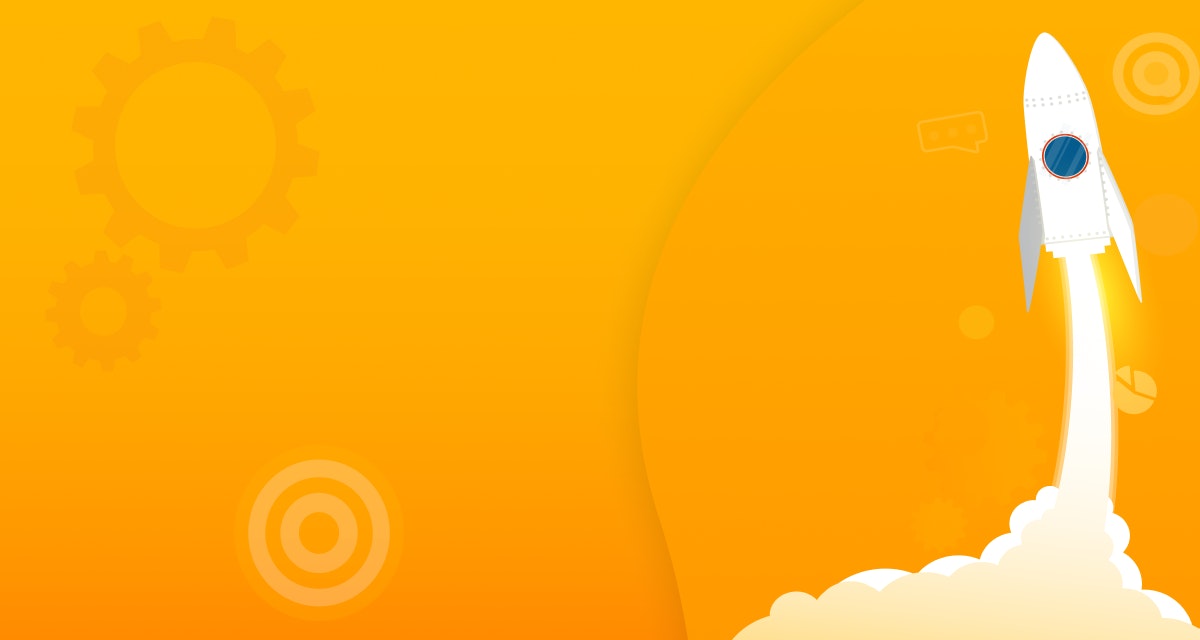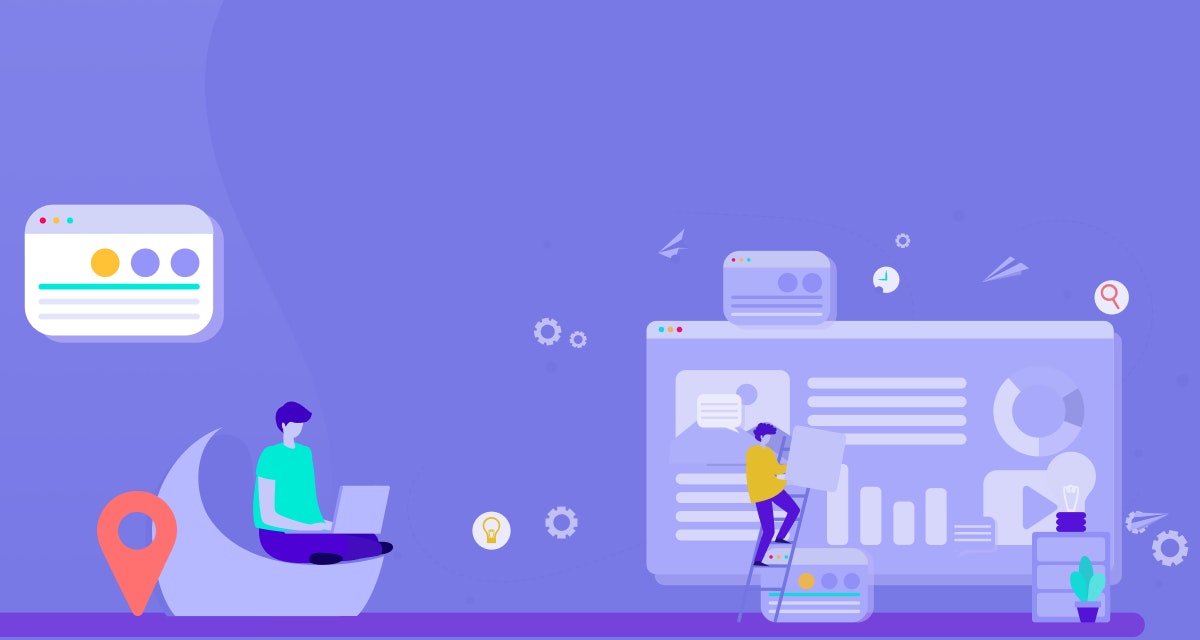Building a new software for your organization is indeed an exciting prospect. However, rushing straight into the development process without defining the project's goal and scope is not a good idea! This, unfortunately, leads to failed expectations and wasted budgets.
Therefore, it is necessary to put the project plan into action, i.e., implement it by going through a project discovery phase. That will help you spot pitfalls and challenges at the beginning itself and leverage the insights to optimize the development process.
Plus, you get to establish trust and communication between the developers and your stakeholders, reemphasize on the budget and resources, and set realistic deadlines.
"Project discovery phase" in a software development lifecycle
The term “project discovery phase” refers to the process of gathering and analyzing information about a specific project, its target audience, scope, and challenges. This phase also educates on additional information related to the development, such as primary and secondary features, measurable deliverables, and so on.
Benefits of the project discovery phase
While the goal is to get the software up and running with minimum hassle, the project discovery phase may seem a waste of time.
However, it has many benefits. Even if the end-user is creating a sense of urgency, discovery workshops should not be eliminated from the software development process for the sake of maintaining the quality of the project's output. Here is why:
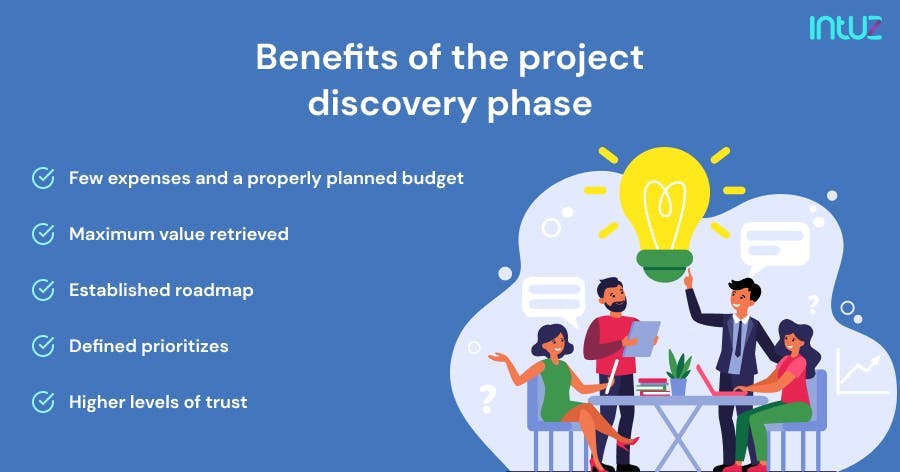
1. Few expenses and a properly planned budget
When you do not skip this phase, you jump to making user flows and wireframes only after many discussions with the designers until they fully understand what you expect from them. This minimizes design iterations, saves time, and puts an end to chaos and arguments, all of which keep the decided budget intact.
2. Maximum value retrieved
When all the project stakeholders get together, many ideas are excitedly thrown around. New features pop up, and the project's vision becomes a shared goal. Skipping this phase can strip everyone from exploring the possibilities.
Therefore, maximize the value of the software development process and get a sneak peek into the fool-proof experience that the end-users will enjoy with discovery workshops.
3. Established roadmap
When the discovery team relies on a clear set of requirements, they can complete each task of the development phase without any rescheduling or alterations. Everyone in charge knows the project's interim goals, deliverables, and deadlines.
They can also better handle the hiccups. For instance, the module that you thought would only take three days to get developed took two weeks to complete as it was complicated. But not a lot of time was allotted for it.
Or a vital feature you wanted to include confuses the end-user and hampers the UI/UX of the software. So now you have to make changes to the wireframe.
If roadblocks like these are accounted for in the discovery phase, then you can increase the startup's feasibility with sustainable inventory and secure extra funding. The risk of missed deadlines is shaved by 75%, and the overall cost savings go beyond 50%.
4. Defined prioritizes
When you begin with a project, everything feels important. You think everything needs to be done "right now." This happens due to the lack of direction. For instance, your designers could spend a lot of time and effort on something that does not demand much attention.
Discovery workshops ensure you create a list of the most important tasks to be achieved based on their priority. Assign all stakeholders dedicated time and resources to deliver what is expected of them on time.
5. Higher levels of trust
Even after a promising sales pitch, you cannot be 100% sure if you have made the right choice for a software development company. However, regular communication and lengthy project discussions with the vendor will put your mind at ease and establish two-way trust. This is only possible if you do not skip the project discovery phase.
Getting started with the project discovery phase
Since the goal of this phase is to collect necessary details about the project, as a result, you must have an idea about the budget, resources available, and time needed for software development. But before the project discovery phase comes a short "pre-discovery phase" wherein you finalize essential information, such as:
1. Business goal
This step helps determine the main problem you want to solve with the software. Based on that, decide who will be the main point of contact or manage the project.
Give them existing documentation about the project to see if anything is missing, which stops them from transitioning into the discovery phase.
Bridge the gaps and derive a quotation for the project. The estimated figure will help you secure a budget for the discovery phase, which includes clearing invoices of the team of specialists working on the project full-time.
As the discovery phase comprises an enormous research element, you do not need to run additional studies beforehand. But you should be ready to share any freely available information you have on the project.
2. Discovery team
As soon as you decide the business goal, get on to putting together a discovery team. Here, the business analyst, developers, UI/UX designer, and project manager take the lead and help with scope assessment, software requirements specifications, and wireframe prototypes. Let us study their roles in greater detail:
a. Business analyst
This person works closely with you and prepares use cases and project requirements. The job includes identifying the minutest of details, such as the intended user base and how they will use the software.
b. Developers
During the phase, the developers keep track of the technologies and programming languages ideally employed for software development. The team does additional research to ensure the tech solutions chosen comfortably solve your end-users’ challenges.
c. UI/UX designer
This is an exciting job role as the person in charge designs the user experience of the software while keeping in mind the project requirements. Specific elements include intuitive design, easy navigation, optimized color combinations, and so on.
The UI/UX designer creates wireframes and prototypes to bring the software vision to life and ensure the end-users can conveniently use the product.
d. Project manager
A project manager's role in the project discovery phase is wide-ranging. From scheduling and arranging internal meetings and recording all the details discussed during those meetings to ensuring productive engagement between the developers and the product discovery team ensues on time and within budget, they do it all!
3. Discovery steps
Conventionally speaking, the project discovery phase helps identify the requirements of clients, end-users, and stakeholders. It helps determine the strong and weak points of the software in question. Therefore, the more information you collect, the better.
a. Competitor analysis
If you already have any market surveys or user interviews in hand, avoid wasting extra time on research. But if you want to research your competitors, do so as it enables you to find the niche your software can occupy to engage end-users.
Spot their product strengths and weaknesses, as well as the threats and opportunities they present. Hand over complete documentation to the business analyst to list the project's milestones, deliverables, and deadlines.
b. Analysis of the company
As a business owner, you would be well aware of the structure and hierarchy of your organization. You would not be required to go through the discovery phase then. However, if you are working with a software development company, you will have to share your knowledge. This will help the outsourced business analysts perform their roles much better.
c. Definition of the stakeholders
This also includes identifying critical members of the project such as investors, administrators, product owners, and end-users who will utilize the software, along with business analysts, developers, UI/UX designers, and project managers who will build the product.
Everyone needs to understand the product vision properly so that the project is free of any ambiguity or disagreements later.
d. Conducting the user research
This requires the discovery team to analyze how, when and under what circumstances the intended digital platform will come in handy. What would make the user go to a particular website or download a mobile application? Talk with buyers-sellers, visit several physical stores and speak to your sales team to discuss the pain points.
e. Creation of user avatars and journeys
Next, build a user journey based on the target audience and the identified problem. This step conceives a feature set comprising the technical solution's design, goal achievement, and marketing campaign effectiveness. This will help you calculate the time and cost required to create a full-scale product or MVP, which brings us to the next point.
4. Time and pricing
No project is successful without proper timelines in place. You need to set specific deadlines to ensure that every little task in the software development process is carried out easily with the necessary adjustments and revisions.
In addition, assessing the costs incurred for project completion is equally essential. In a modern Agile management framework, the project discovery phase is placed in the first sprint (spanning two weeks) as it helps check how well developers and the end client understand each other.
Depending on the project scope and the chosen methodology, the discovery phase can last one week to two months. The average time frames for the process are as follows:
- Small project — 1-3 days
- Medium project — 1-2 weeks
- Large project — More than three weeks or more
There are a couple of ways to bill the software development project. Billing can be carried out either at a fixed price or on an hourly basis, or as per the working hours of all the discovery team members. Take your pick!
All in all, the costs will vary based on the project type, project size, resources and technologies used, and the specialty leveraged for building the tool. The total budget can be as little as $1500, or it can touch the sky for $50,000
5. Deliverables
These will vary based on the project size, feature complexity, degree of urgency, specialties incurred, and so on. The project discovery phase ensures you receive the following items:
a. Software requirements specification (SRS)
It is a document comprising the details of the project, including the recommended tech stack, feature set, architecture outline, and so on. Please review the document and suggest changes before approving it.
b. Top-level UX prototype
Before the developers start coding the software, you will receive a simplified version of the app's interface and core features. It also offers insights into how the software will function once completed. Enjoy full clarity even before the work begins!
c. Development estimates
In this step, you will receive a recommended development team lineup, an estimate of the project budget, and the deadline. The final numbers calculated here are unlikely to change unless the project scope changes significantly.
d. Proposal
A development proposal created based on the information gathered through discovery workshops will help ensure the project team creates a product that meets all client requirements and expectations. Plus, it clarifies project vision and minimizes development risks.
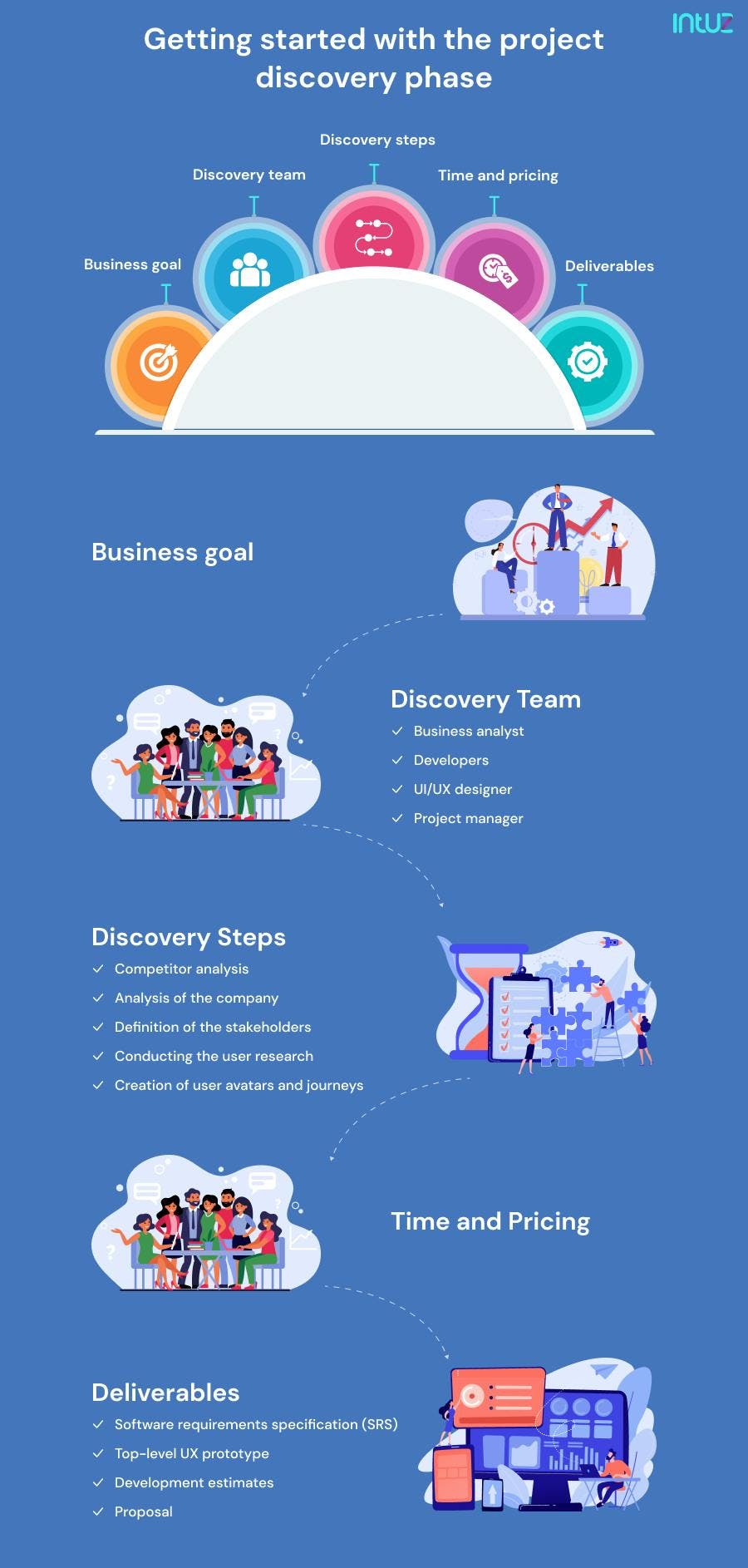
Key steps to take for “discovery”
By now, you have a complete understanding of why integrating the discovery phase into software development is necessary. Depending on the project, discovery can take a few weeks or a couple of months. The phase can be rightfully broken down into four easy steps:
1. Interview
In this step, you hold a series of preliminary talks with the client and domain experts to learn about the software the latter is looking to build. You get an idea about their competitors, target audience, and existing infrastructure and collect project requirements.
If your team has already conducted research, for instance, a user survey or marketing study, you leverage those insights to develop a more comprehensive view of the project and get help from the software development company with this.
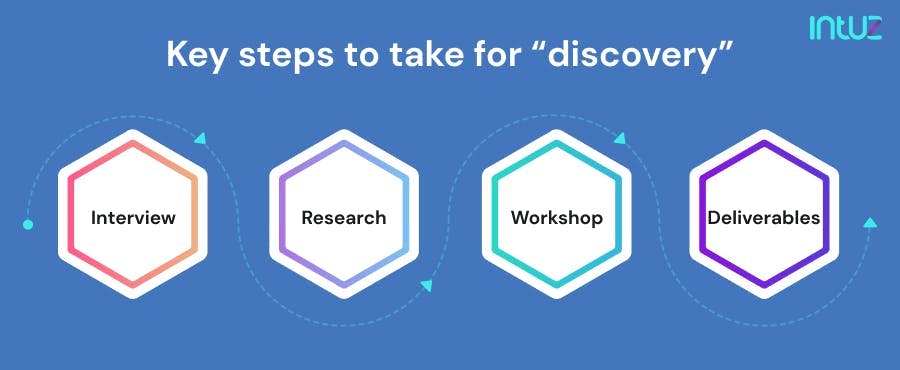
2. Research
This step engages the stakeholders, including business analysts, UI/UX designers, lead tech, and management execs of the discovery project. Different parameters are studied to define the project scope, from the target audience and the market to your brand specifics and existing infrastructure to industry trends and standards.
3. Workshop
Clear communication is key to a successful project discovery phase. Not having everyone on the same page is the same as skipping this phase. Therefore, as soon as the research is done, it is shared amongst all shareholders for feedback. After they agree on the project scope, it is sent to the analytics team for approval.
4. Deliverables
In this step, all documentation and reports are prepared. As a rule, have a meeting with your developers and stakeholders to communicate the results of your research, explain the proposed strategy, and offer a plan of action for software development.
Over to you
One cannot underestimate the importance of project discovery in software development. It is essential to identify potential bottlenecks and pitfalls in product development and ensure complete transparency amongst the client and stakeholders as everyone knows the project scope and expected at the end of the development process.
At Intuz, we take every project seriously and conduct thorough preliminary research to identify possible challenges and find ways to overcome them. We want to yield maximum results for all our clients.
If you are keen to know how we can upgrade or modify your solution or build you a brand new product, drop us a quick message, and we will get back to you asap!

